
It’s a hot summer day, and all you want is an ice cream cone with your kids, but your sensitive teeth stop you. You want to go for a walk, but the cool winter wind makes your teeth ache. You have just whitened your teeth, and they are extremely sensitive.
Sensitive teeth can take over your life and stop you from enjoying everyday things.
Below are the products I have used myself and recommend to my patients with sensitive teeth.
We need to understand the root cause of tooth sensitivity before making a blanket statement about what to do or what products would be best.
Tooth sensitivity can be caused by exposed root surfaces, thinned tooth structure, or by more severe issues such as a cracked tooth or a dying nerve within the tooth.
Using certain dental products can worsen tooth sensitivity, and the consumer (even me as a dental professional) is unaware of it until we are told and understand the research and science.
A huge cause of tooth sensitivity is exposed roots and thinned tooth structure.
Exposed roots and thinned tooth structures can result from using the wrong abrasive and acidic products. These products wear down the tooth structure and gum tissue.
I have 4 major questions for people who are experiencing tooth sensitivity
- Do you know the abrasivity level of the toothpaste you are using?
- Do you know how hard or soft your toothbrush is?
- Do you know the pH level of the mouth rinse you are using?
- Do you know the health status of your mouth’s gum and bone tissue?
It is one thing for me to recommend dental products here, but my focus is on educating you on why you need to use certain products and why avoiding others for your tooth sensitivity is crucial.
Below, I go over the 4 significant questions I listed above and the products that are safe to use.
Do you know the abrasivity level of the toothpaste you are using?
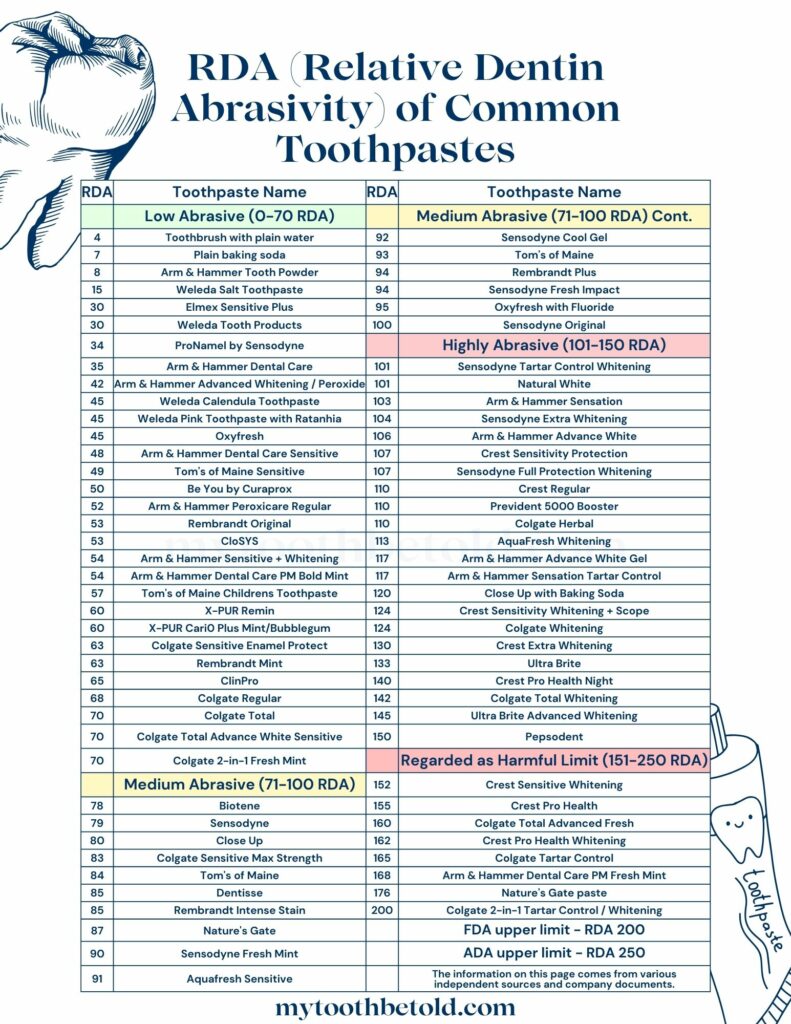
The abrasive level of toothpaste directly correlates to tooth sensitivity because it abrades away the tooth surface, making the teeth more susceptible to tooth sensitivity.
It hurts my heart to see people getting tooth sensitivity treatments from their dental professionals and then go back to using their high-abrasive toothpaste.
It is so important not only for dental professionals but also for consumers and patients to understand how the use of our product affects our oral health.
I would only use toothpaste within the green “safe” zone with an RDA of 0-70.
To prevent and treat sensitivity caused by exposed dentin, we can either cover the surface of the exposed dentin or desensitize the nerve endings in the tooth. This prevents the nerve from transmitting pain signals to the brain.
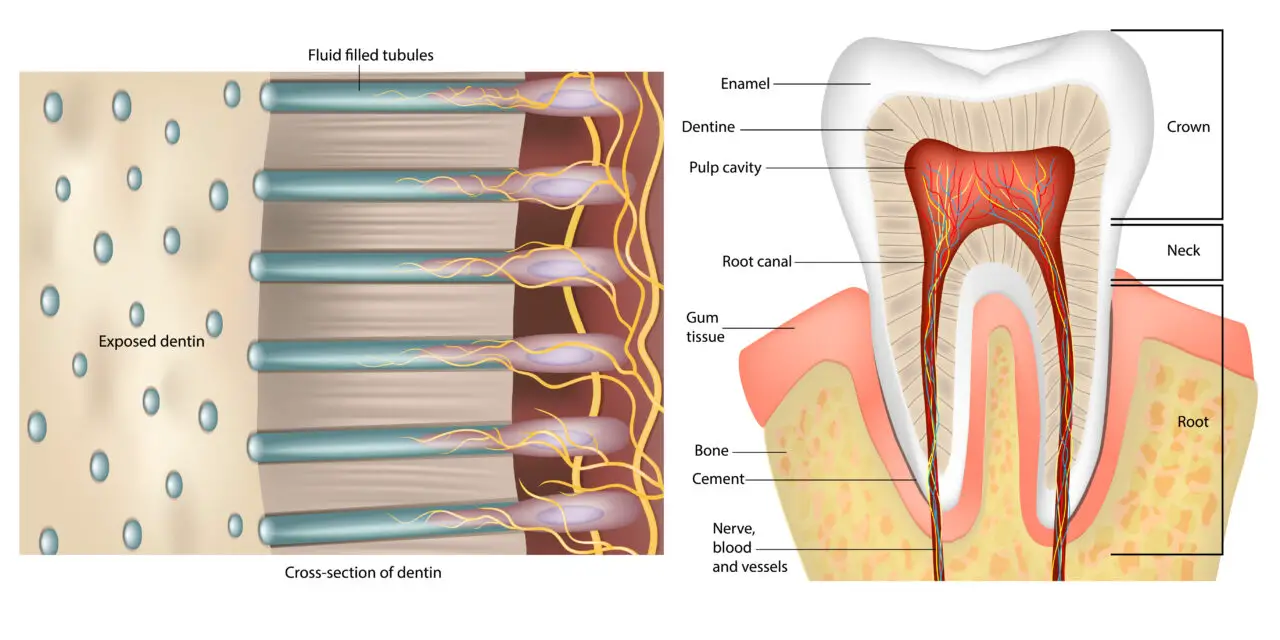
You want to use toothpaste that the health authority has approved, that has been third-party tested, and that has many studies to back up its efficacy claims.
I am very sensitive to certain ingredients in toothpaste, especially SLS (sodium lauryl sulphate), so I prefer to avoid them. SLS has also been linked to oral ulcerations.
Also, when purchasing toothpaste, the packaging should state the % of the active ingredient present in the formula. The package may say it contains a certain ingredient, but it may not be enough to have a therapeutic benefit.
My favourite toothpaste for sensitivity is the X-PUR Remin toothpaste (Amazon link).
(Amazon link).
- It has an RDA of 60,
- uses 10% nano-medical hydroxyapatite (the main structure of our teeth and the gold standard over fluoride in Japan), and
- has a neutral pH of 7.51.
I understand that toothpaste is more expensive than the traditional big brand names. However, a little goes a long way. You only need a very small pea-sized amount, so the tube will last a while. And the effects from the toothpaste are priceless.
Remin protects the teeth against sensitivity by coating and filling the exposed dentin and tubules.
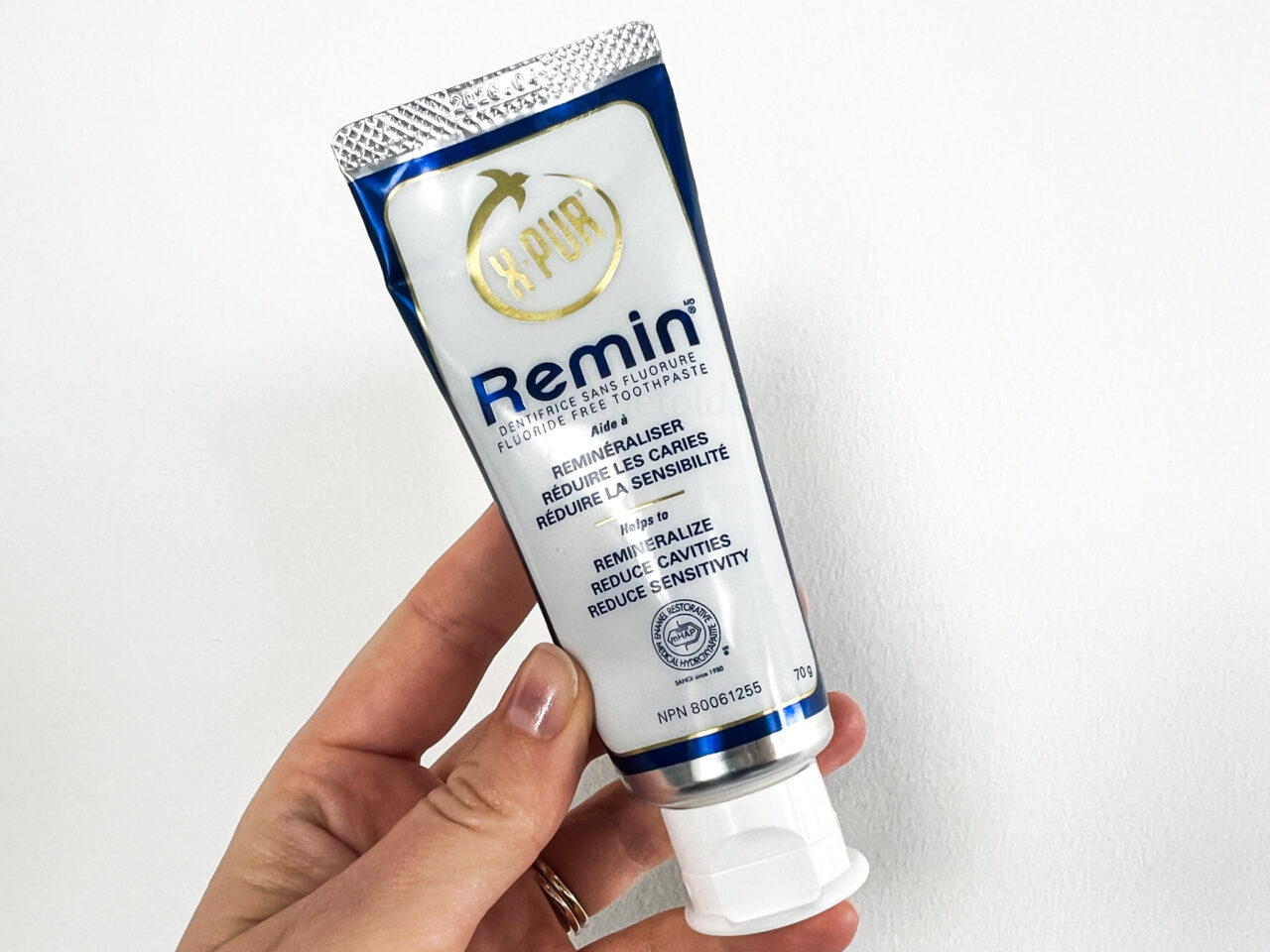
For the toothpaste to be the most effective, don’t rinse your mouth with water after brushing your teeth. Below is why.
After brushing your teeth, it is best not to rinse your mouth immediately as most of the active ingredients in the toothpaste get washed away. Leaving the toothpaste on your teeth for longer can increase its effectiveness.
Spit out as much as you can! I got used to it quickly, especially when I noticed it was improving my sensitivity.
This is why you should floss or use an interdental brush between your teeth before brushing. This allows the active ingredients in the toothpaste to reach between your teeth!
Remember to use a pea-sized amount of toothpaste on your brush!
Do you know how hard or soft your toothbrush is?
Manual toothbrush
Not all toothbrushes are made the same. You get what you pay for.
Did you know the average toothbrush has 500-800 bristles?
Did you know the average toothbrush bristles are made out of nylon that absorbs water and bacteria?
Did you know the average toothbrush bristles are too short to reach along the gumline and bend underneath to clear away the biofilm?
There is a toothbrush with enough bristles to be the most effective, long enough bristles, and bristles made of polyester material that will not absorb water and bacteria. The gold standard manual toothbrush is the Curaprox manual brush.
Curaprox is my all-time favourite toothbrush. For adults, it comes in two different models: the 5460 and the 12460 velvet toothbrush.
These toothbrushes get their names by the number of bristles they have. (Quite a few more bristles than the average manual toothbrush)
- The Curaprox 5460 has 5460 bristles (Amazon link)
- The Curaprox 12460 has 12460 bristles
 (Amazon link)
(Amazon link)
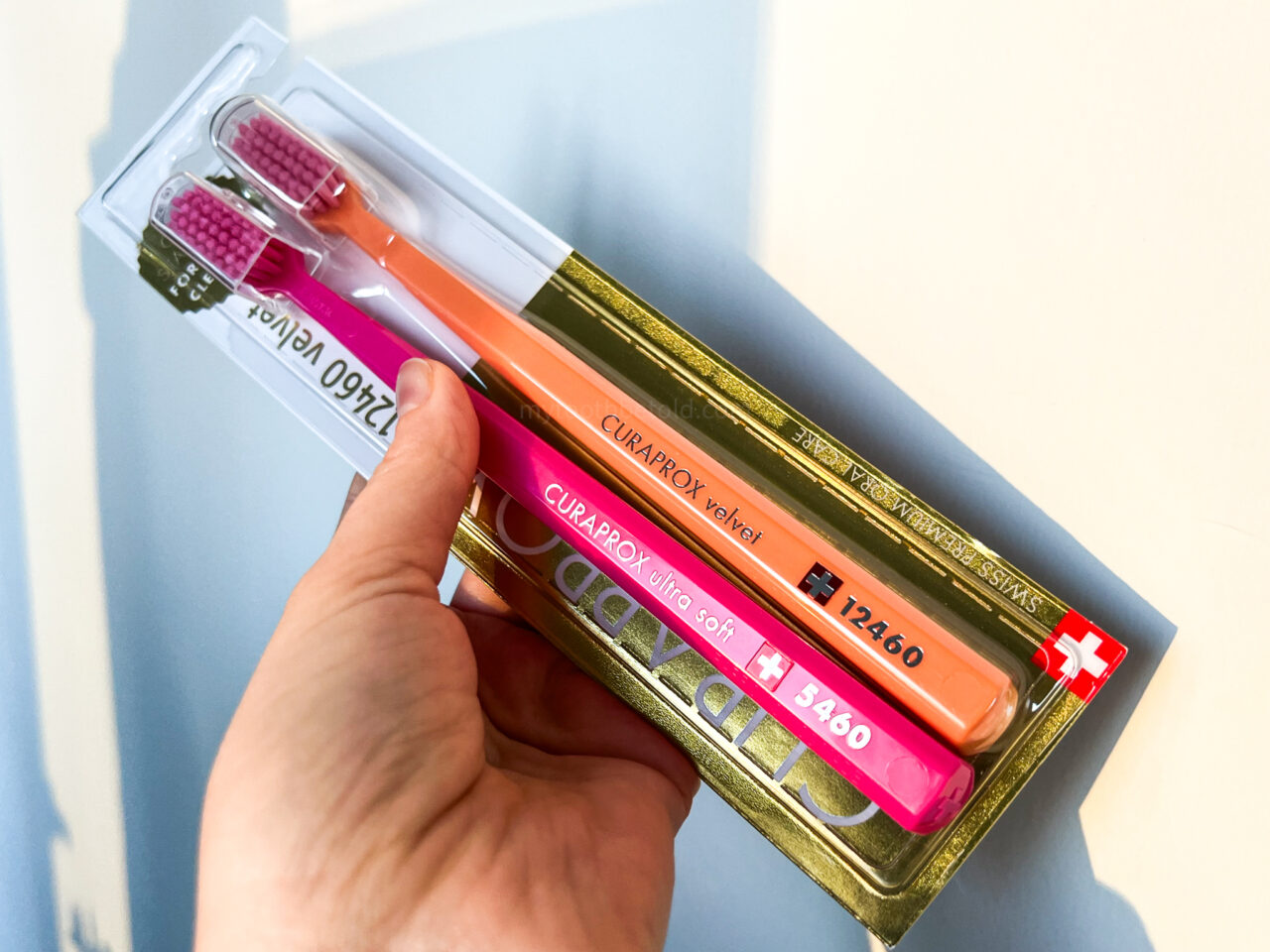
The handle is perfectly designed to help you get a 45-degree angle on the gum line, has extra soft bristles, and is more resilient to bending, so the toothbrush will last longer than the average toothbrush.
Electric toothbrush
An electric toothbrush prevents wear on the gums and teeth, which can lead to sensitivity. It does the job for you and moves properly to avoid gum wear.
An electric toothbrush with a small head is essential to contour effectively around the teeth and gums. A small brush head is key.
There are many brands of electric toothbrushes, and I believe that as time goes on, we learn about what factors each contributes to the best product possible.
Curaprox created an electric toothbrush called the Hydrosonic Pro that;
- uses polyester bristles that don’t absorb water (maintains bristle effectiveness and lasts longer)
- a small brush head (single)
- supports the hydrodynamic cleaning effect
- and adds curvature to the brush heads for better adaptation of the brush to the teeth and gums.
Brush heads are the most important factor in any electric toothbrush. And this is why the Curaprox electric toothbrush is one of the best on the market. Purchase the Curaprox Hydrosonic Pro . (Amazon link)
. (Amazon link)
The Curen polyester bristles do not absorb water, which allows the performance to stay consistent and extremely soft.
They also include a single small brush head perfect for getting around implants, bridges, braces, wires, and between teeth, especially if teeth are misaligned. You can see the three brush heads the toothbrush comes with below.
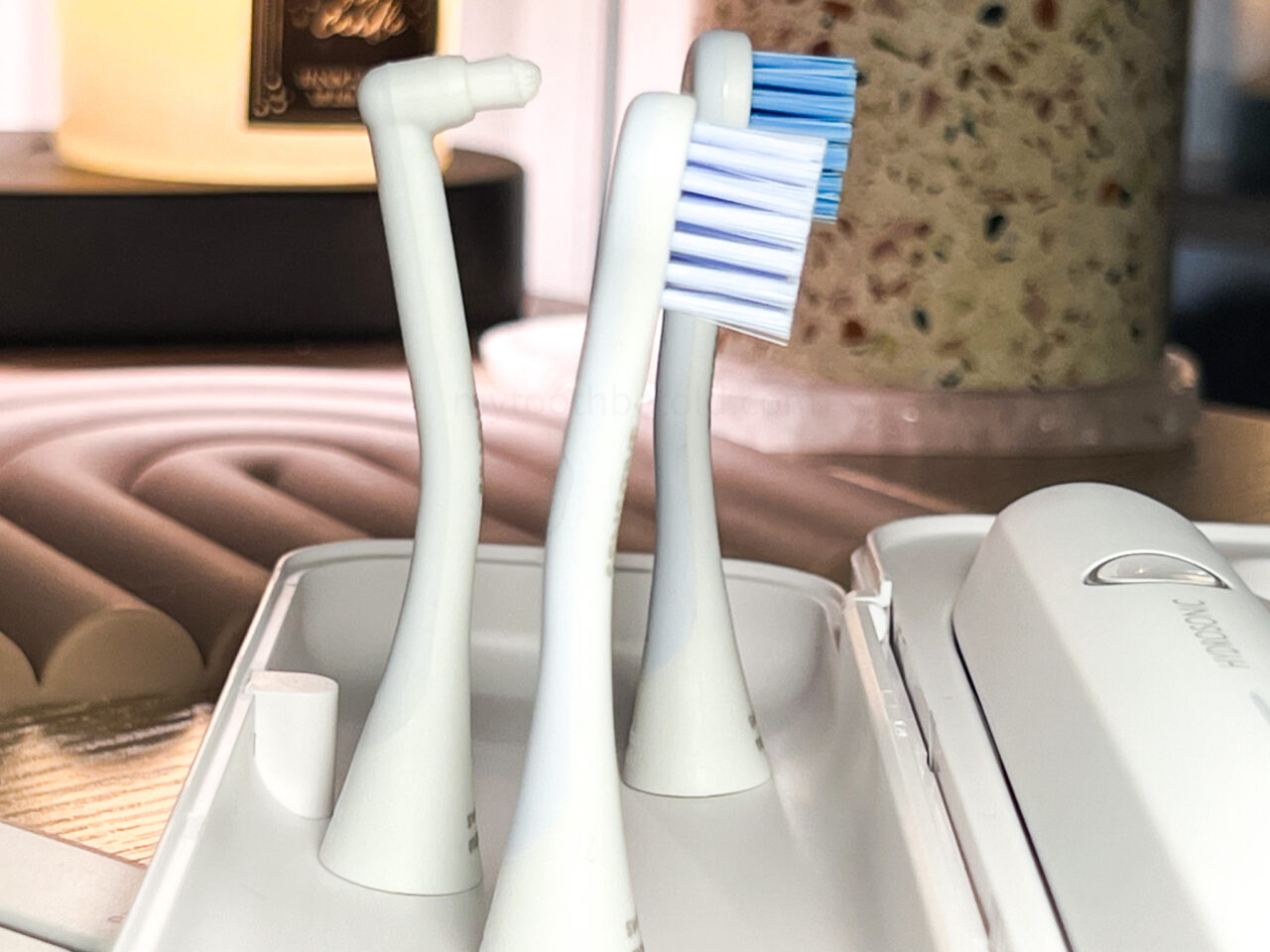
Replacement heads
You can buy the replacement brush heads for the Curaprox Hydrosonic Pro on Amazon. Here is the link to purchase on Amazon.
Do you know the pH level of the mouth rinse you are using?
I was shocked to learn how acidic mouthwashes are. Whether you are experiencing tooth sensitivity or not, using products with a safe, neutral pH is essential.
There is much discussion about using alcohol in mouth rinses and using a product that harms the oral flora. I have long been outspoken against using mouthwash for those exact reasons.
One of the only mouth rinses I recommend for those who need it is the X-Pur Opti-Rinse. The key takeaways from this product are;
- neutral pH level
- alcohol-free
- xylitol to reduce cavity-causing bacteria that create acid that can cause more tooth sensitivity
- fluoride to help remineralize teeth and prevent tooth sensitivity
It also does not harm the health oral microbiome.
In the USA, Opti-Rinse is not yet available.
I found this incredible article made by a dental office listing the pH levels of common mouthwashes used in the USA.
https://www.centralpointfamilydentistry.com/post/what-mouthwashes-are-like-rinsing-with-soda
One of the top mouthwashes available in the USA is TheraBreath Mouthrinse . (Amazon link)
. (Amazon link)
Again, if you are experiencing tooth sensitivity, please see your dental professional to determine the cause.
Remember, your dental products’ RDA levels and pH levels can contribute to your tooth sensitivity.
Keep smiling, and have a wonderful day!
Holly 🙂
